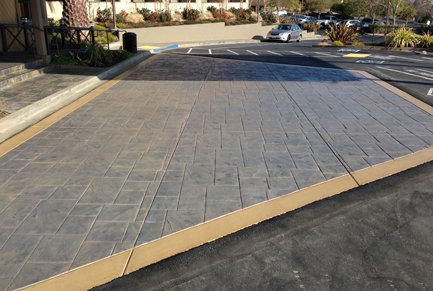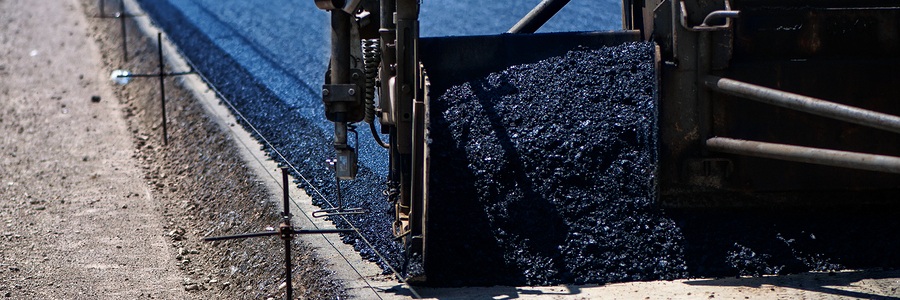Our A1 Professional Asphalt & Sealing Llc Diaries
Our A1 Professional Asphalt & Sealing Llc Diaries
Blog Article
A1 Professional Asphalt & Sealing Llc Fundamentals Explained
Table of ContentsSome Of A1 Professional Asphalt & Sealing LlcGetting My A1 Professional Asphalt & Sealing Llc To WorkAbout A1 Professional Asphalt & Sealing LlcLittle Known Questions About A1 Professional Asphalt & Sealing Llc.All About A1 Professional Asphalt & Sealing Llc

The oil in a vehicle engine is not simply oil. The REOB contains all the ingredients that were in the waste oil as well as the wear metals from the engine (mostly iron and copper).
By making several blends using different REOB samples and various asphalt binders, the variants largely can be averaged out. A number of States offered examples of recognized REOB structure to TFHRC scientists, that analyzed the samples to compare the percent of included (recognized) REOB to the found (evaluated) amount. The analyses showed an equivalent percent of included and discovered REOB.
Top Guidelines Of A1 Professional Asphalt & Sealing Llc
None of those States understood that the asphalt they were getting included REOB. One State urged its samples had no REOB - https://www.edocr.com/v/1vn6dav1/a1asphaltsealng/a1-professional-asphalt-sealing-llc.
Of the 1,532 samples checked, 12 percent consisted of REOB, and some included substantially high levels of it at 1020 percent. The highest degree was 34 percent in a sample from Texas, which TxDOT had made use of in a patching substance. This testing additionally disclosed the existence of phosphoric acid in 11 percent of the samples, and 2 percent included ground tire rubber.
Two years back at TRB's annual conference, the Federal scientists held an REOB workshop and provided the findings of their lab examinations to a standing room-only group. Some companies do not particularly outlaw REOB, they do impose physical examinations that preclude its useeffectively a ban. Others do not ban it by requirements, but have arrangements with asphalt providers to avoid using REOB
Our A1 Professional Asphalt & Sealing Llc PDFs
Ohio and Texas limit levels to less than 5 percent of the asphalt. To develop a trusted test method that all States can use, the TFHRC researchers set up a round-robin test plan.
In overall, the researchers prepared and shipped 720 blends. The participants are evaluating the samples independently utilizing the guidelines offered by the TFHRC researchers. The round-robin testing is nearly finished, and TFHRC remains in the procedure of accumulating the outcomes. The outcome will be a suggested AASHTO examination technique that any type of State can adopt and use (a-1 asphalt).
The pavement with REOB, which is located 0.6 mile (1 kilometer) from the sidewalk without REOB, has similar subgrade, traffic thickness, and climate. The section of Highway655 with 5 to 10 percent REOB revealed considerable cracking. In this instance, the presence of REOB was the recognized source of fracturing at a low temperature levels.
An area of test sidewalk in Minnesota (MN1-4) discovered to include REOB likewise broke prematurely. The sidewalk executed well for the very first 3 to 4 years, but after that started to split.
9 Simple Techniques For A1 Professional Asphalt & Sealing Llc
The tests were not comprehensive, but they showed that at levels of 6 percent or even more, the tensile toughness of the asphalt went down considerably. At a level of 3.5 percent REOB, the variation in the physical test techniques was higher than the impact of REOB. It was difficult for scientists to examine whether REOB was present. https://penzu.com/p/6a2868f92af16f91.

One binder criterion considered is the distinction in between the low temperature level important spec temperature for stiffness (S) in the flexing beam rheometer and the flexing light beam rheometer creep slope (m-value) kept in mind as Tcritical. 2 independent research study teams, one from AASHTO and the various other from the Asphalt Institute, wrapped up that even more research study is needed on the use of REOB in asphalt.
Previously, all asphalt screening determined design homes such as rigidity. These tests do not reveal what products had actually been included in the asphalt. One example gotten during the TFHRC study had a really odd analysis. The example had the following examination results: Superpave PG 64-28 with a heat grade Full Article of 67.3 Tcritical on the bending beam rheometer was 6.7 levels Celsius.

Some Known Questions About A1 Professional Asphalt & Sealing Llc.
These results demonstrate there are weak points in the standard engineering testing protocols that might be manipulated. The manufacturer may have an economic advantage and the item passes all the standardized examinations, however the product might not be useful to guaranteeing long-term efficiency. To address this concern and the development of new asphalt additives and extenders, TFHRC is starting a research program to make use of portable spectroscopic tools, x-ray fluorescence spectroscopy, and Fourier transform infrared spectroscopy to enable evaluations to be done in the area instead of having to take examples back to the lab.
Report this page